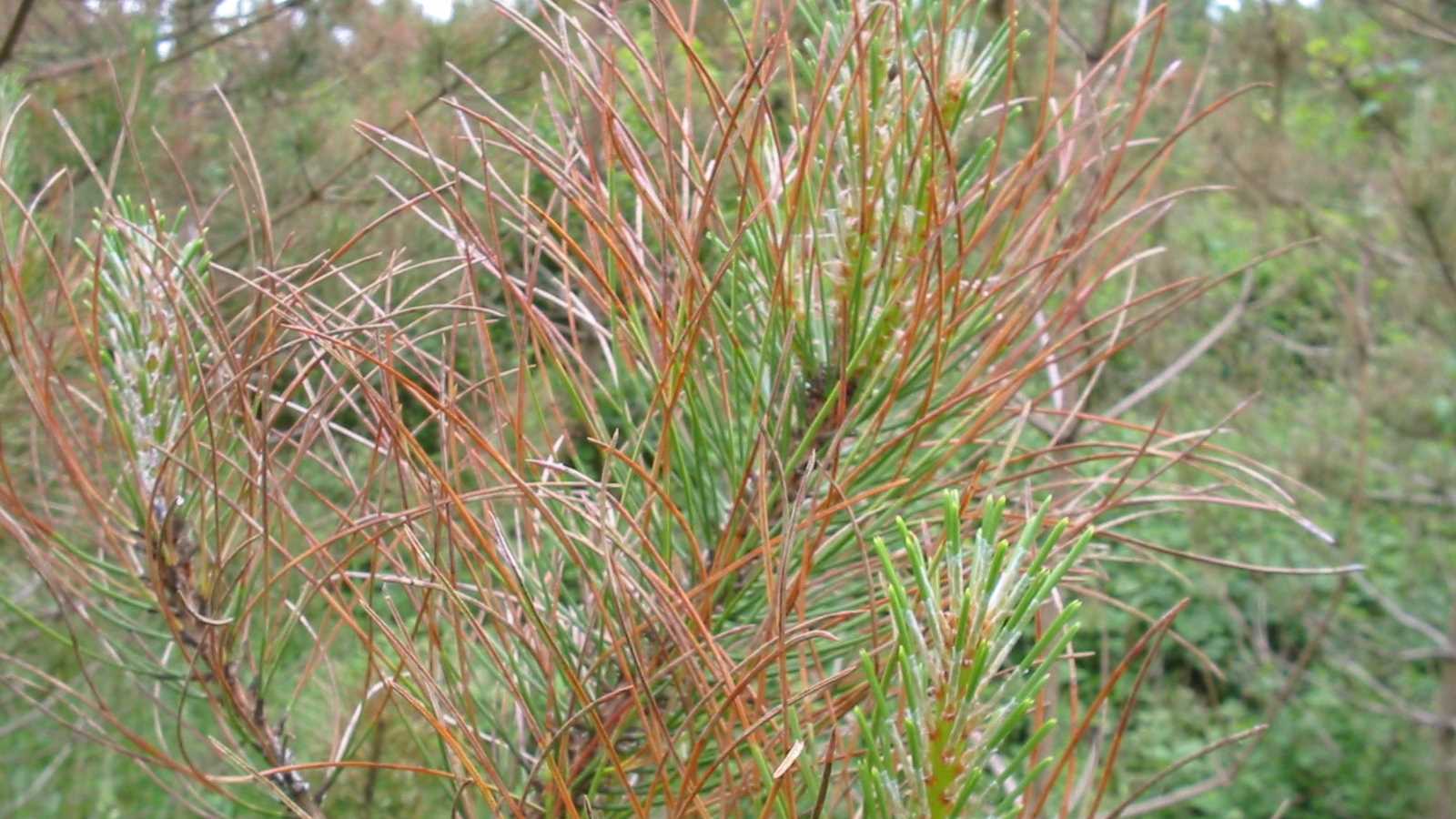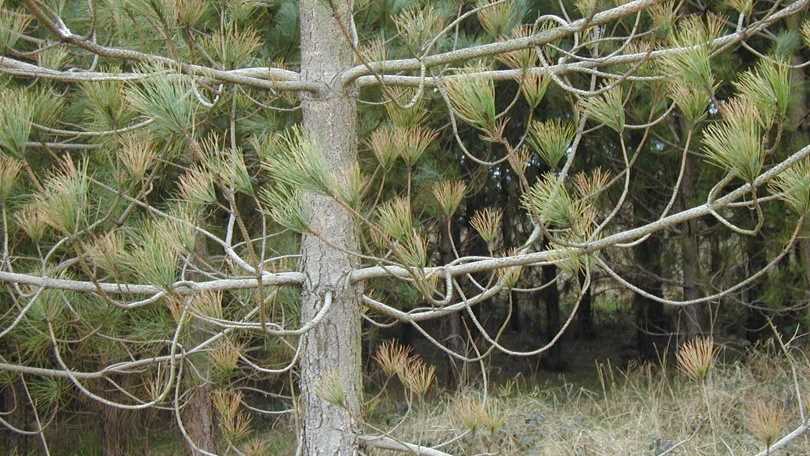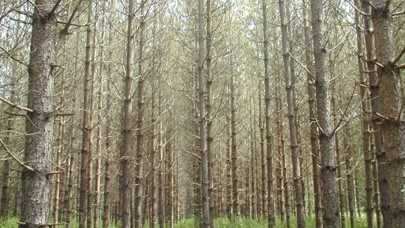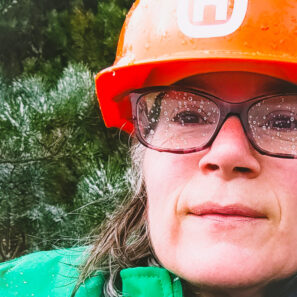How Dothistroma has Blighted our Forests
Katherine Tubby has been part of Forest Research’s Tree Health team at Alice Holt since 2000. She researches the impacts and management of pests and diseases including Dothistroma needle blight (DNB). Operationally, she says, DNB is currently best tackled using silvicultural means.

All pictures copyright Forest Research
The pathogen Dothistroma septosporum has certainly had an impact on Britain’s commercial and native pine forests. Dothistroma needle blight (DNB) is often called red band needle blight because infection by this fungus causes reddish brown banding on the needles. It also causes premature defoliation. Repeated heavy infection can reduce growth and cause significant mortality in some species.
In 2006, planting Corsican pine on the national forest estates was suspended because DNB was such a concern. For the past decade Forestry and Land Scotland has been removing all ‘Inland’ and ‘Coastal’ varieties of lodgepole pine to reduce levels of fungal inoculum – the pathogen spores that cause initial infection.
Most pine species are susceptible to this pathogen to a greater or lesser extent. Luckily, to date, Scots pine seems more resilient than lodgepole and Corsican pine, but infection levels vary widely. It is essential to monitor your forest’s health closely to detect changes in Dothistroma infection and impact.
How widespread is Dothistroma, and how important is it?

Forestry Commission colleagues first detected this pathogen back in the 1950s in a tree nursery in Dorset and in a small area of forest in South Wales. All infected trees were thought to have been destroyed. However, recent genetic analysis demonstrates a DNB infection in South Wales in the late 1980s was linked to the earlier infestation. That means the eradication had been unsuccessful. In the late 1990s there were larger outbreaks in Corsican pine-dominated forests in the east of England. Now, Dothistroma is found in all parts of Britain where there are pine forests.
Dothistroma is quite varied across Britain. Genotyping reveals a population of Dothistroma largely confined to the north of Scotland. There is another in the south of England and, interestingly, a group of Dothistroma in lodgepole pine in central regions of Scotland with links to Dothistroma populations in British Columbia (BC). Large quantities of lodgepole pine seeds came across from BC in the early part of the twentieth century, but there’s no evidence the pathogen can be moved around on seed. The genetic relatedness of the Scottish and British Colombian populations is a bit of a mystery. Our experimental research programme is exploring differences between these distinct populations in terms of their host preference and responses to environmental conditions.
What can we do about DNB?

Dothistroma is here to stay. In fact, some populations might even be native to Britain. So how do we manage DNB-affected forests?
Premature felling has been used to take out some of the worse affected stands, but all pine species planted in Britain are susceptible to some degree. We have explored the use of ground-based and aerial fungicide applications in Scots pine stands, but the use of chemical fungicides is being reviewed by the forest industry. We are also investigating whether viruses that infect fungi (mycoviruses) could be used to control Dothistroma. This work is at an early stage, but in a collaboration with the University of Hertfordshire we have identified a chrysovirus which might reduce the pathogenicity (the ability of an organism to cause disease) of Dothistroma. Research on this and potentially other mycoviruses is continuing.
Operationally, DNB is currently best tackled using silvicultural means. Our iconic Caledonian pinewoods are surrounded by buffer zones where no non-native pines are planted. Natural regeneration of Scots pine is encouraged rather than risk introduction of non-local populations of Dothistroma on planting stock. On Britain’s commercial estates, forest managers can use regular thinning to reduce impacts of DNB, at least in areas not affected by wind-throw. Our long-running thinning trials in eastern England compared no-thin, management table thin and heavy thinning from an initial c. 2500 down to 350 stems/ha at second thinning. The heavier thinning reduces disease intensity and increases growth. It increases airflow and creates a drier microclimate around the trees making conditions more hostile for the pathogen. We don’t yet have a full understanding of what these treatments mean in terms of ultimate timber volume. The impacts that DNB infection might have on timber quality and potential markets have not been researched.
It has been really interesting to see forest managers using newer techniques like underplanting to mitigate DNB in badly diseased stands. As an alternative to premature clear-felling, some managers have underplanted Corsican pine at first thinning with shade tolerant species. These have included Douglas-fir, grand fir, European silver fir, Serbian spruce, western red cedar, Atlas cedar, Japanese red cedar, Macedonian pine, Weymouth pine and coast redwood. While Dothistroma has been recorded on some of these species, none are seriously affected by the pathogen. This is an interesting way of increasing species diversity, whilst maintaining or improving timber production potential. It should also give a degree of climate change proofing as many of these normally grow in warmer areas than Britain.
What’s on the horizon?
Unfortunately, Dothistroma septosporum is just one of a group of foliar pathogens threatening Britain’s forests. Whilst I specialise in D. septosporum, there is also concern about a close relative, Dothistroma pini which can cause DNB. There is also concern around another fungus, Lecanosticta acicola. This causes brown spot needle blight (BSNB). Our ongoing surveillance work shows neither is currently found in Britain, but they are relatively widely distributed across Europe. Both can produce airborne spores and both affect pine species. Recent modelling work suggests they could thrive in Britain, particularly under climate change scenarios. There is still a lot we don’t know about these two pathogens. We need to carry out more research to gauge the risks they might pose to our commercial and Caledonian forests, and our new and emerging tree species.
Find further information on Dothistroma here.
Biosecurity
Everyone can help protect our forests. Always follow industry Keep it Clean protocols. Plants for planting are by far the biggest risk to our forests, choose a reputable supplier – if possible, buy local and from Plant Healthy Certified nurseries. For more advice see How biosecurity can prevent the introduction and spread of tree pests and diseases – GOV.UK

Katherine Tubby
Katherine Tubby also researches Heterobasidion root and butt rot, and the pine weevil, Hylobius abietis. She plays an active part in a global network of pathologists identifying and monitoring potential threats to forest health. She works alongside the Animal and Plant Health Agency (APHA) and the Scottish Agricultural Science Agency (SASA_HMU) conducting forest nursery surveillance for quarantine pathogens. This includes surveillance for the causal agents of pine pitch canker and brown spot needle blight. She enjoys a mixture of field and lab-based research.

